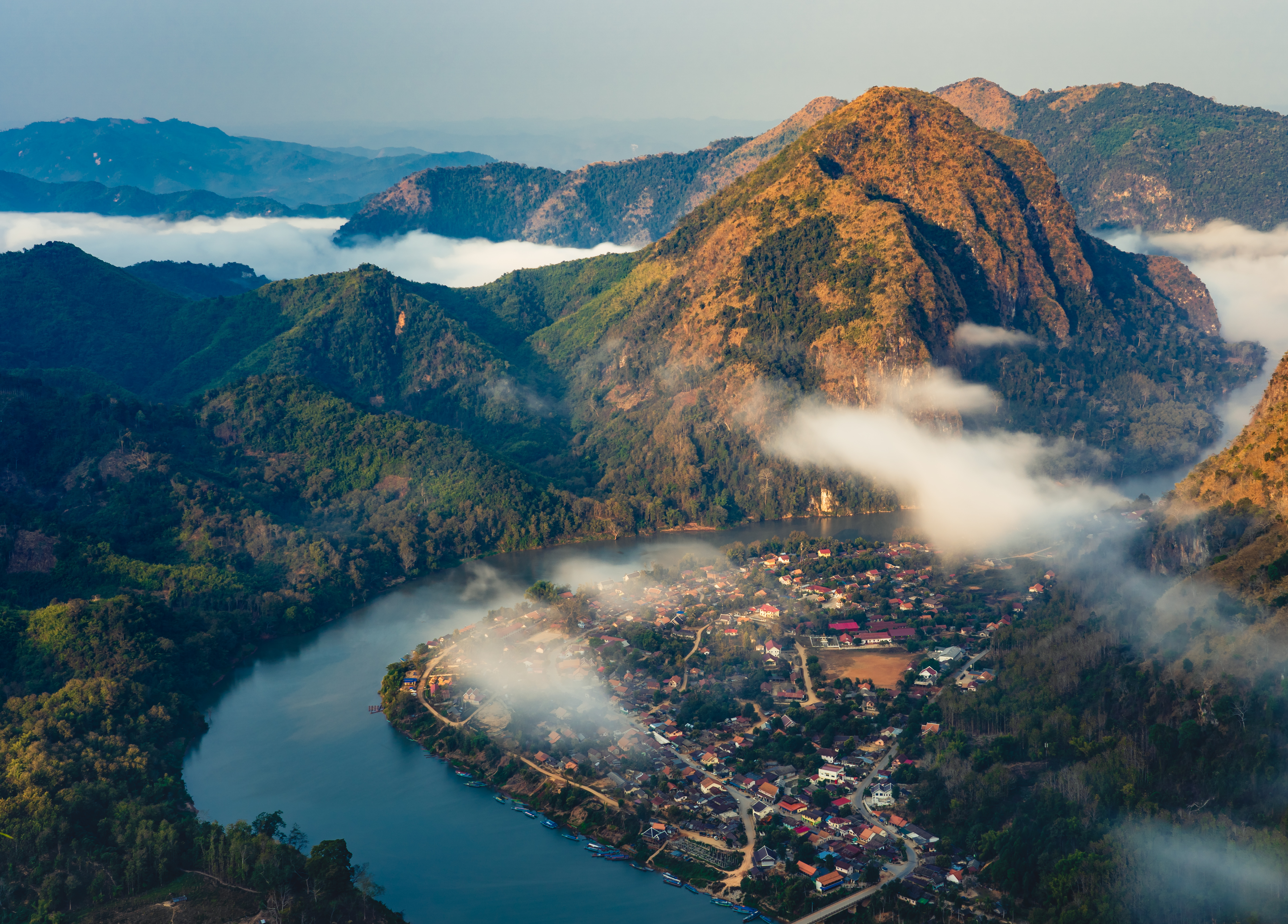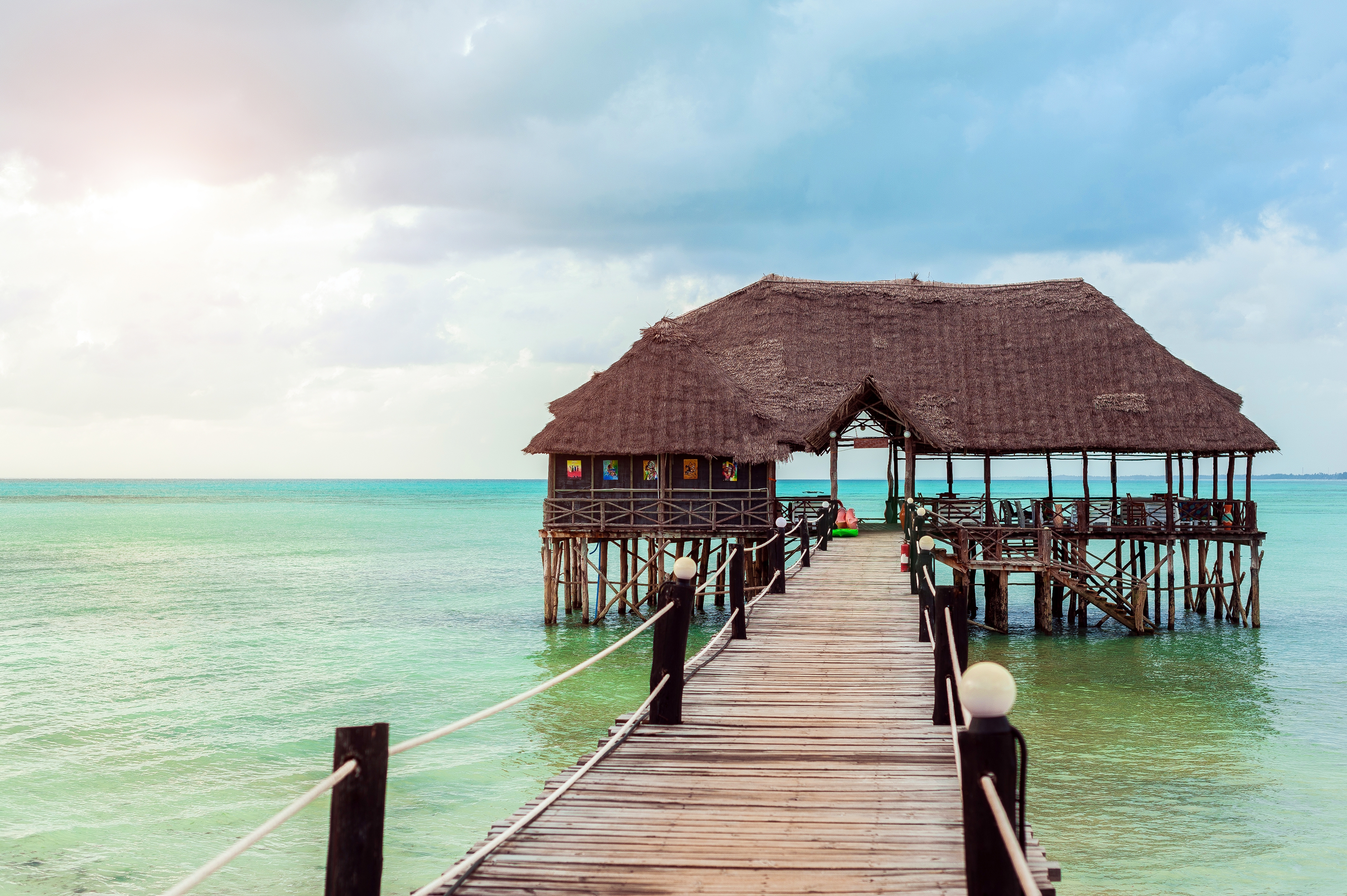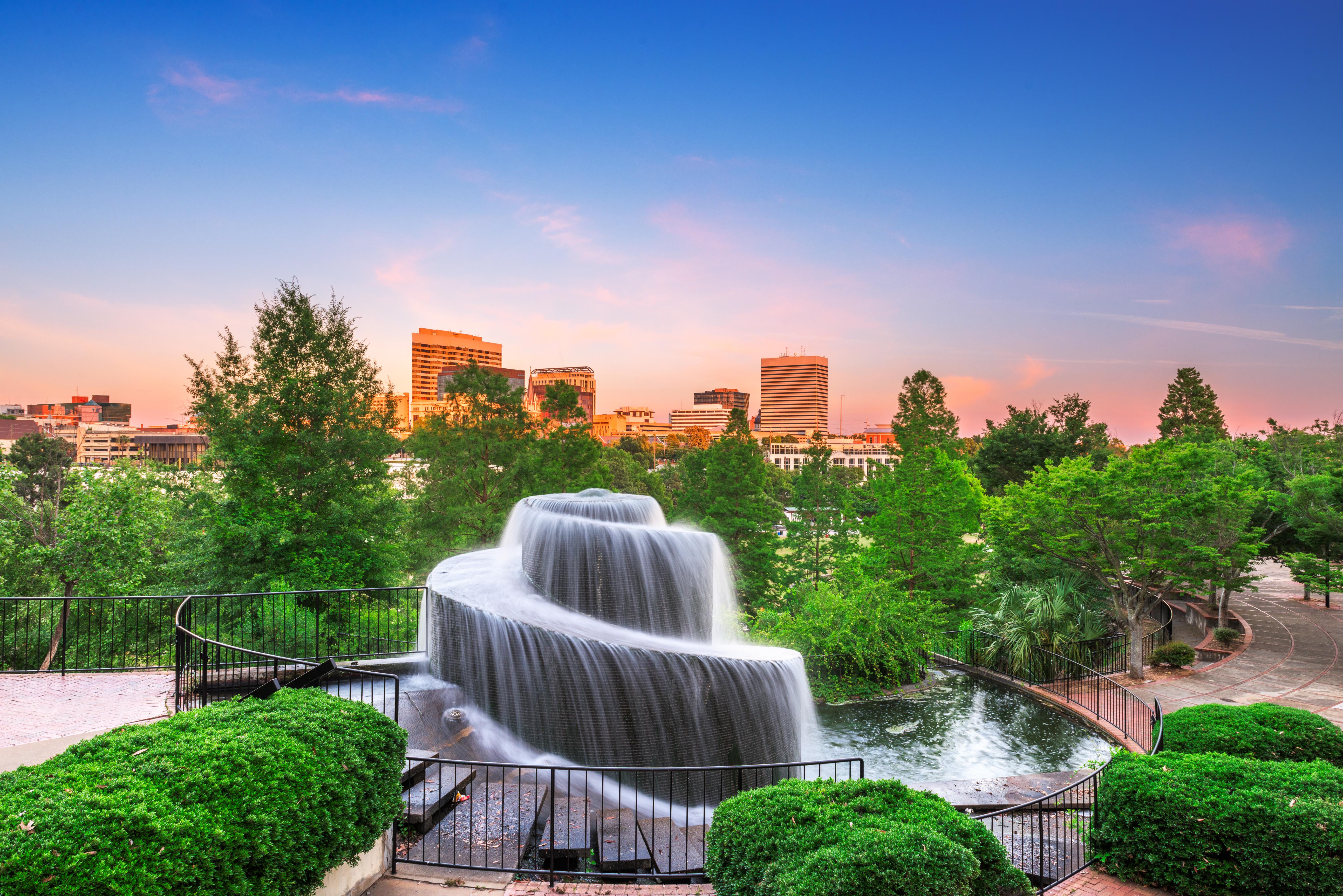17 Places Where Nature Looks Straight Out of a Sci-Fi Movie
In the realm of science fiction, the landscapes of alien worlds often captivate our imagination with their surreal and otherworldly beauty. Yet, what if I told you that our very own Earth holds landscapes that rival those fantastical realms, where nature itself becomes a canvas for the dreams of science fiction? These mind-bending landscapes exist, scattered across the globe, each one a testament to the planet's geological and biological wonders. From the vivid, technicolor hues of hydrothermal features to the stark, alien-like rock formations, these landscapes offer a glimpse into the infinite possibilities of nature's creativity. As we delve into each section, we will uncover the unique features that make these places extraordinary, highlighting the scientific phenomena that shape them and the cultural narratives they inspire. Prepare to be transported to the corners of the Earth where nature's artistry defies the ordinary and invites us to dream beyond the stars.
1. The Enigmatic Salar de Uyuni: Earth's Largest Mirror
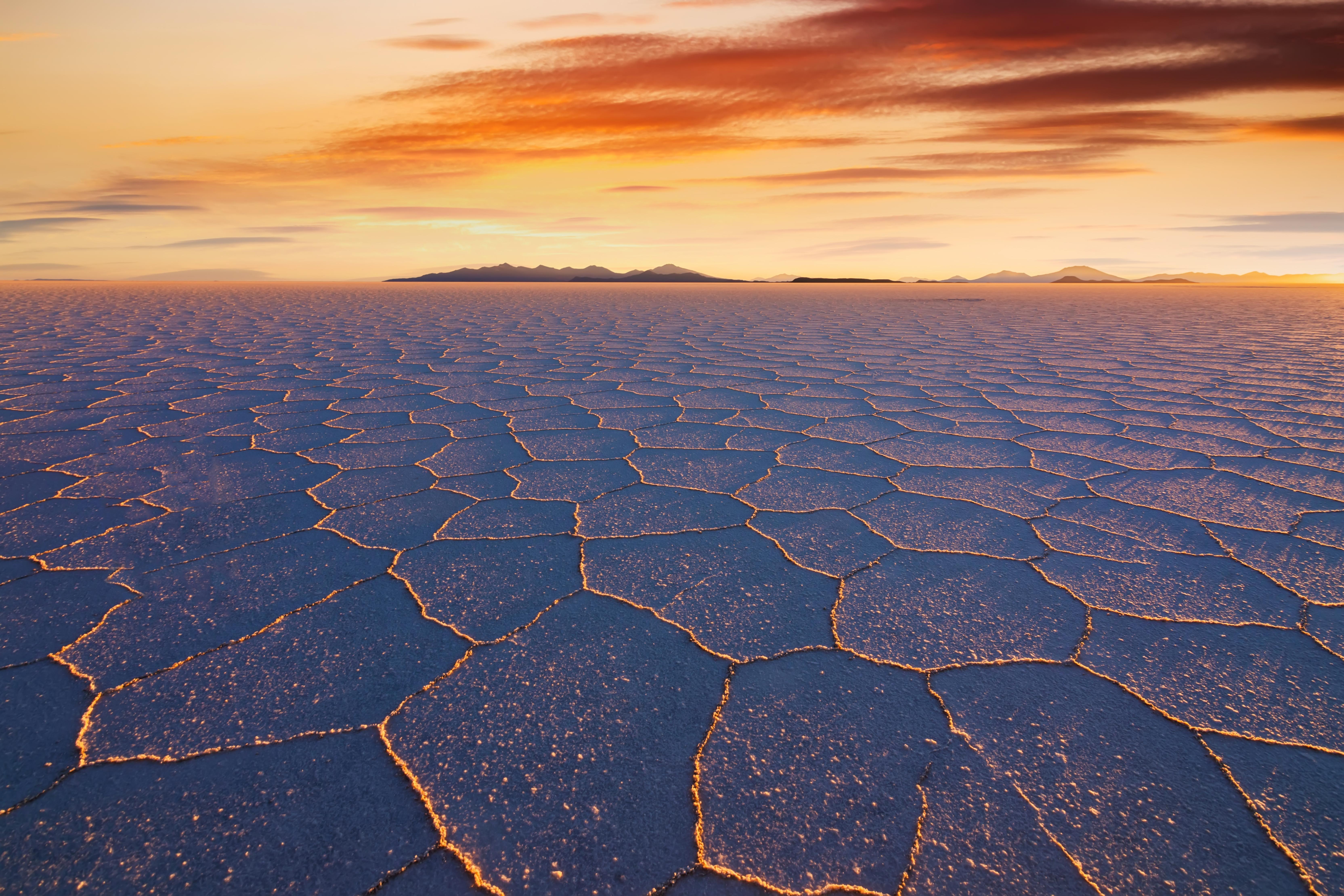
Salar de Uyuni in Bolivia is not only the world's largest salt flat but also a place where the line between earth and sky disappears. Spanning over 10,000 square kilometers, this vast expanse of white salt crust becomes a colossal mirror during the rainy season, reflecting the sky in a manner that seems almost supernatural. The geological history of Salar de Uyuni is as fascinating as its appearance. Formed as a result of transformations between prehistoric lakes, its salt crust is interspersed with lithium-rich brine pools, making it a significant resource for future energy technologies. Visitors to Salar de Uyuni often describe the experience as stepping into a surreal painting, where the horizon stretches infinitely and the reflection of clouds creates a dreamlike illusion. This landscape challenges our perception of reality, offering a tangible experience that feels like walking on the surface of another planet. The interplay of light and reflection here is not just a visual spectacle but a reminder of the delicate balance and interconnectedness of natural elements.
2. The Mystical Glow of Waitomo Caves: Bioluminescent Marvels
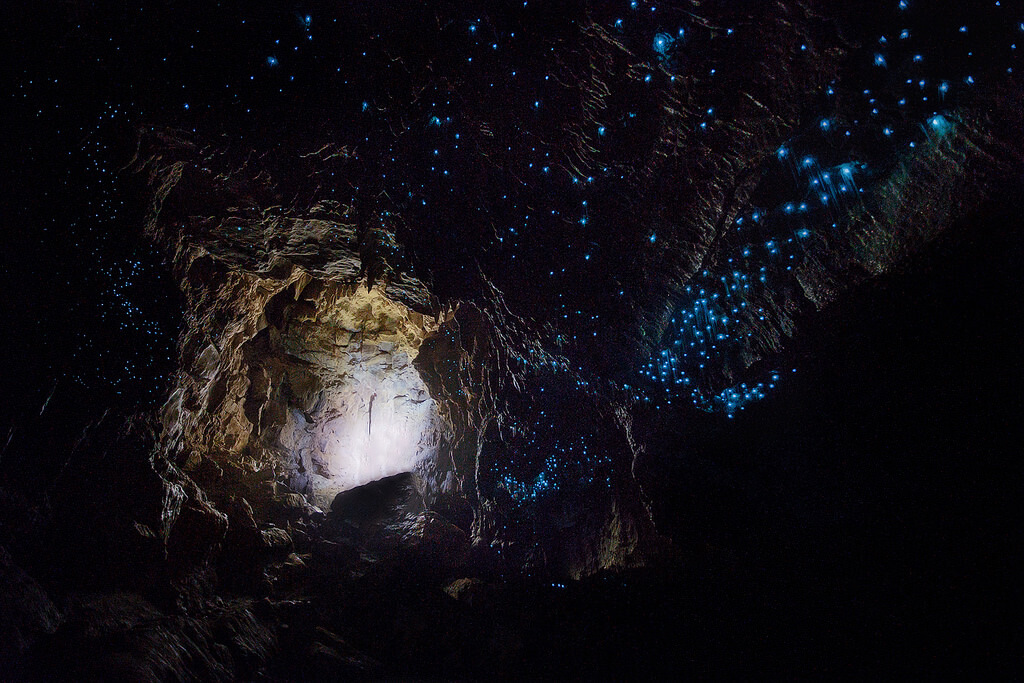
Deep beneath the verdant hills of New Zealand's North Island lies the Waitomo Caves, a subterranean wonderland illuminated by the ethereal glow of thousands of tiny bioluminescent creatures. These glowworms, known scientifically as Arachnocampa luminosa, transform the cave ceilings into a starry night sky, casting a magical blue-green light that captivates all who venture into this hidden realm. The bioluminescence is a result of a chemical reaction within the glowworms, a process that not only serves as a means of attracting prey but also creates an enchanting atmosphere reminiscent of science fiction worlds. The Waitomo Caves are more than just a natural spectacle; they are a testament to the intricate ecological relationships that sustain life in even the most secluded environments. Exploring these caves is akin to embarking on a journey through an alien ecosystem, where each glowworm's light is a beacon of nature's ingenuity and adaptability. The experience leaves visitors in awe, pondering the mysteries of life and the universe.
3. The Surreal Beauty of Antelope Canyon: Nature's Sculpted Masterpiece
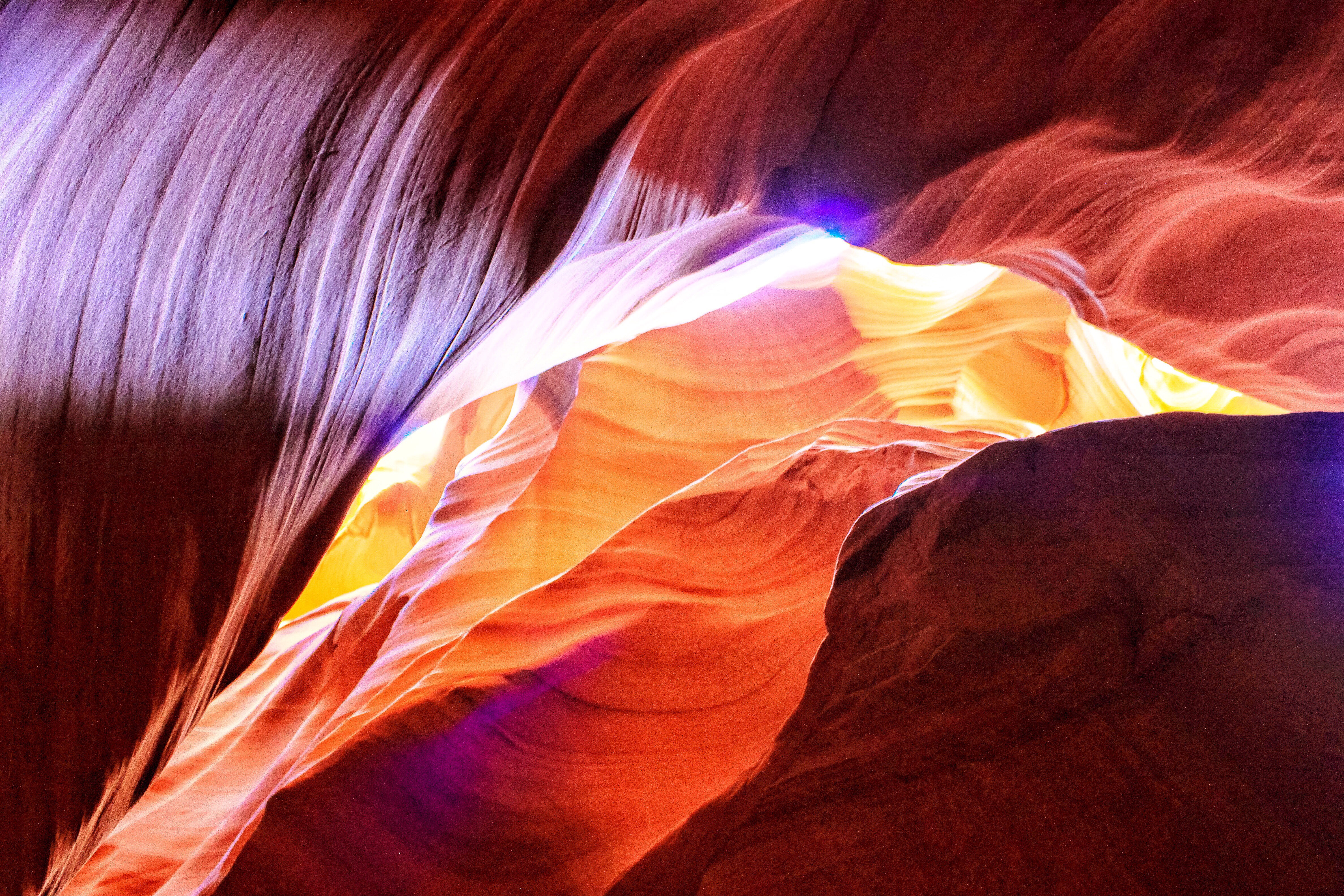
Antelope Canyon in Arizona, USA, is a testament to the artistic prowess of nature, where wind and water have carved sandstone into a labyrinth of twisting, undulating forms. This slot canyon, with its narrow passageways and towering walls, creates an otherworldly atmosphere that has become a favorite subject for photographers and travelers alike. The play of light within the canyon is nothing short of magical; as sunlight filters through the narrow openings above, it casts beams that dance across the walls, highlighting the rich reds, oranges, and purples of the sandstone. This interplay of light and shadow transforms the canyon into a living canvas, a place where time seems to stand still. Antelope Canyon's formation is a slow, ongoing process, shaped by the relentless forces of erosion. This geological wonder invites us to ponder the power of natural processes and the beauty that emerges from them. Walking through Antelope Canyon is like stepping into a dreamscape, where the boundaries between reality and imagination are beautifully blurred.
4. The Alien Landscapes of Cappadocia: Fairy Chimneys and Underground Cities
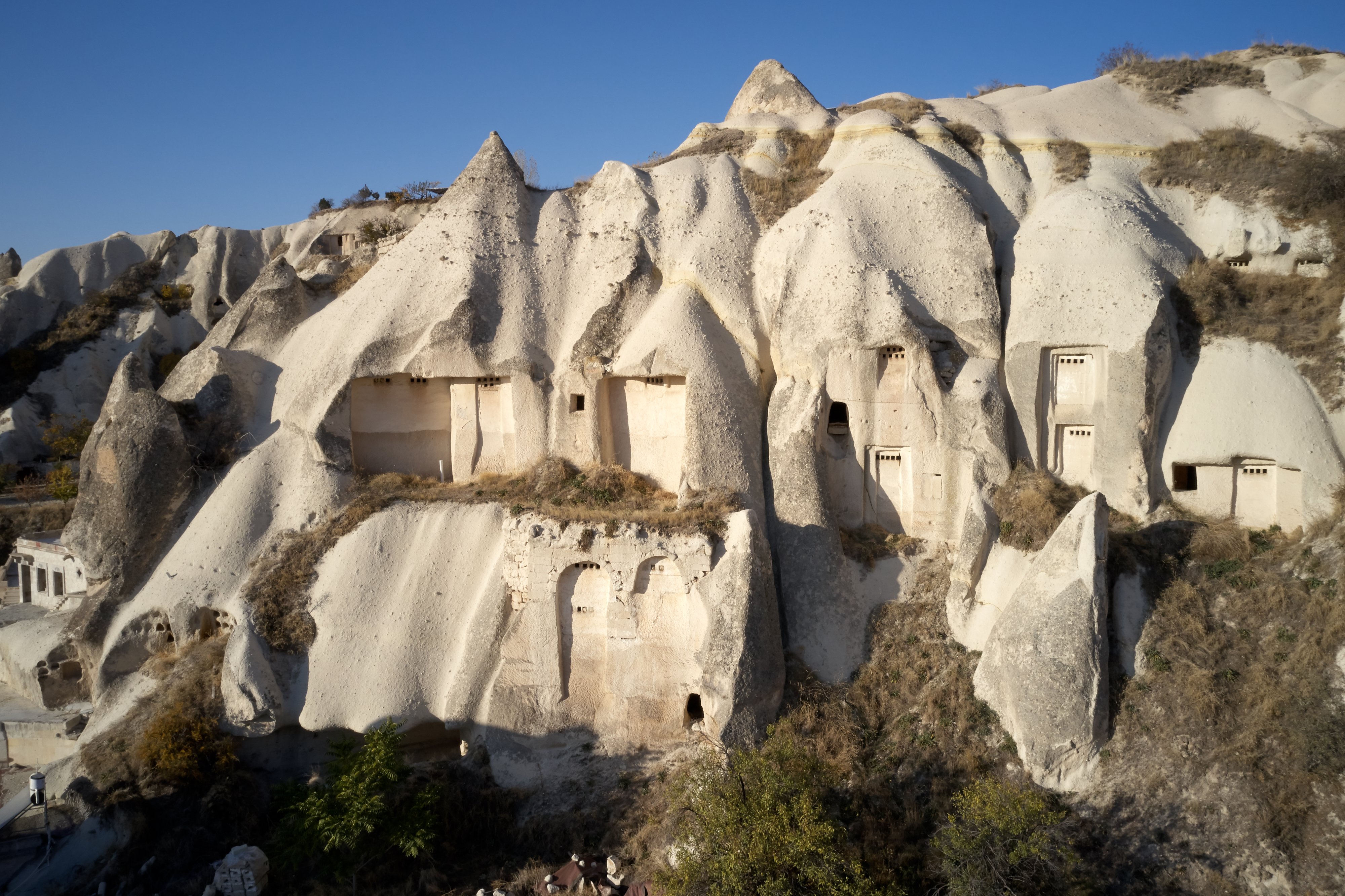
Cappadocia in central Turkey is a region that seems plucked from the pages of a science fiction novel, with its unique rock formations known as "fairy chimneys" and ancient underground cities. These towering, conical structures are the result of volcanic activity and subsequent erosion, creating a landscape that is both fantastical and historically rich. The region's soft volcanic rock has been shaped by wind and water over millennia, forming surreal shapes that have been further sculpted by human hands into dwellings, churches, and monasteries. Cappadocia's underground cities, some of which extend several stories deep, were carved by early Christians seeking refuge from persecution, adding a layer of historical intrigue to this already captivating landscape. The fairy chimneys and subterranean labyrinths of Cappadocia invite exploration and imagination, offering a glimpse into a world where nature and human ingenuity coexist in harmony. This landscape, with its blend of natural beauty and cultural heritage, is a reminder of the enduring relationship between people and the environment.
4. The Otherworldly Terrain of Wulingyuan: Pillars of Stone and Mist
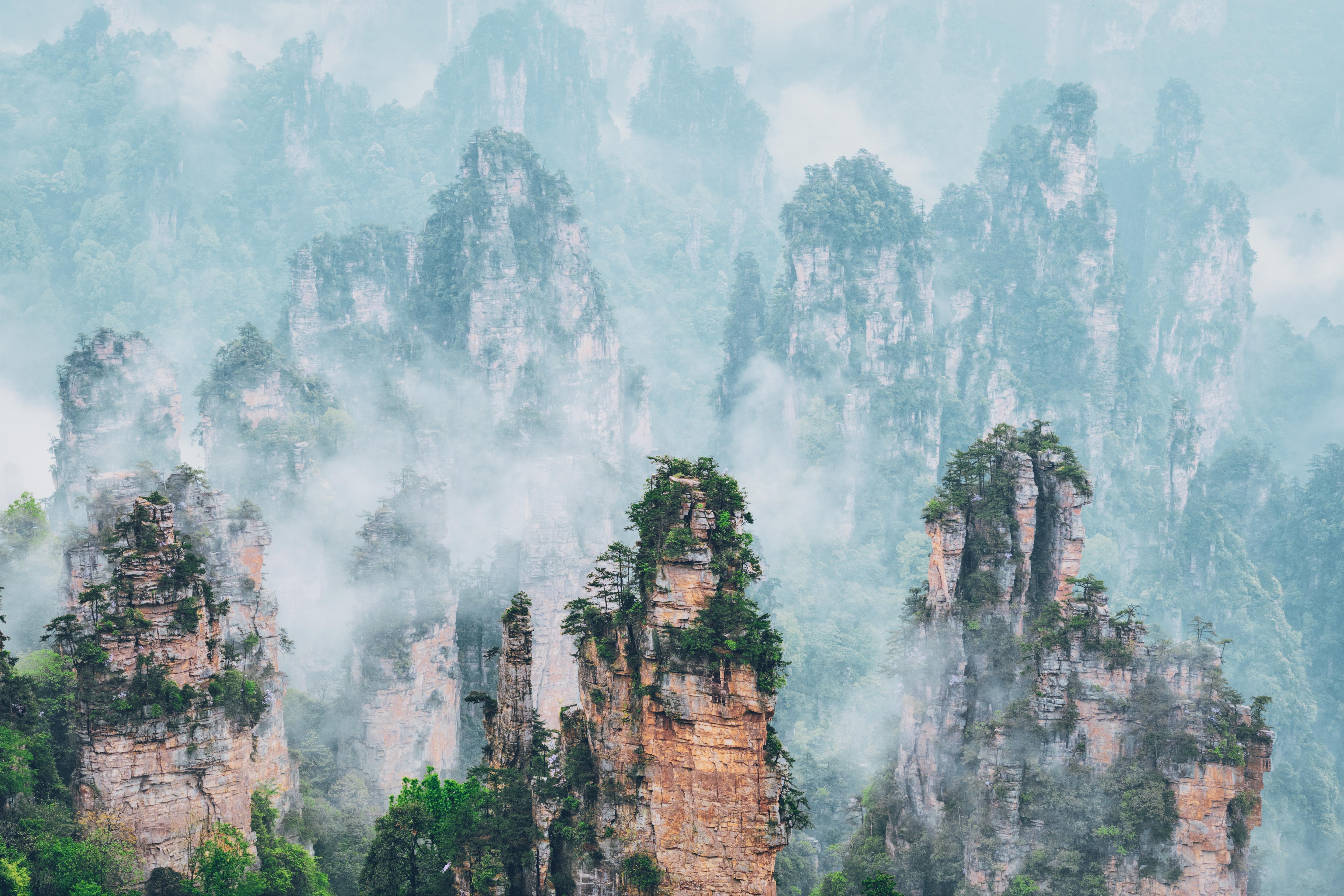
Wulingyuan Scenic Area in China's Hunan Province is a UNESCO World Heritage site renowned for its towering sandstone pillars, shrouded in mist and mystery. These natural skyscrapers, some reaching heights of over 200 meters, rise dramatically from the forested valleys below, creating a landscape that feels both ancient and futuristic. The unique geology of Wulingyuan is the result of millions of years of erosion, which has sculpted the quartz sandstone into the striking formations we see today. The area is also home to a rich biodiversity, with numerous endemic species thriving in its subtropical climate. Wulingyuan's ethereal beauty has inspired countless legends and served as the inspiration for the floating Hallelujah Mountains in the film "Avatar." The interplay of stone and mist creates a dreamlike atmosphere, inviting visitors to lose themselves in the landscape's timeless allure. This natural wonder challenges our perceptions of scale and permanence, reminding us of the ever-changing nature of the Earth.
5. The Vibrant Colors of the Painted Desert: A Geological Kaleidoscope
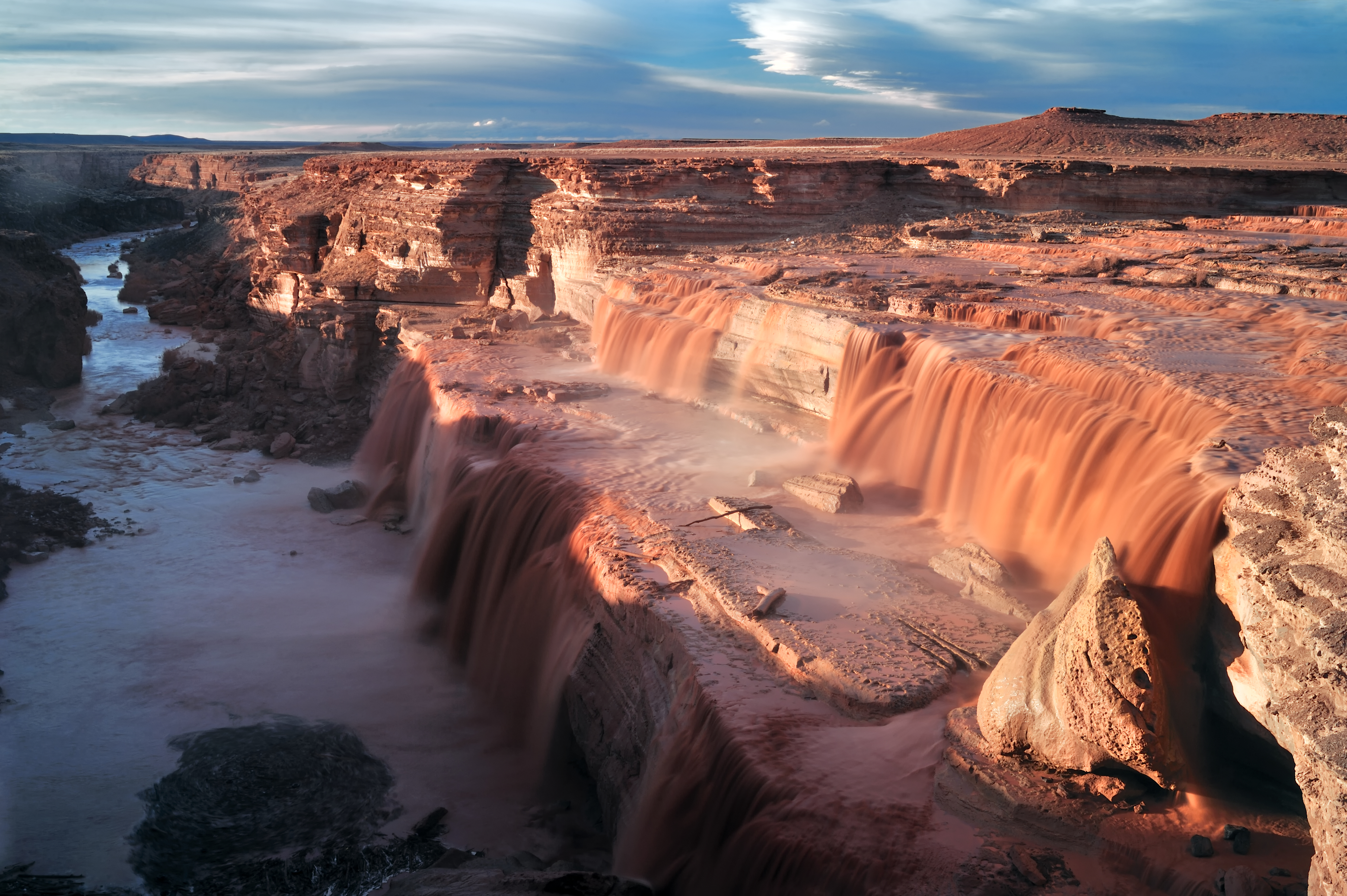
The Painted Desert, stretching across northern Arizona, is a vibrant tapestry of colors and textures, where layers of sedimentary rock create a stunning display of reds, oranges, pinks, and purples. This geological wonder is part of the larger Colorado Plateau and is renowned for its striking beauty and rich fossil deposits. The colors of the Painted Desert are the result of varying mineral content within the rock layers, each hue telling a story of the region's ancient past. Wind and water have sculpted the landscape into a series of mesas, buttes, and badlands, creating a terrain that feels both alien and familiar. The Painted Desert is not only a feast for the eyes but also a window into the Earth's history, offering insights into the processes that have shaped our planet over millions of years. Exploring this landscape is like stepping into a natural kaleidoscope, where each turn reveals a new pattern and a new perspective on the beauty of the natural world.
6. The Majestic Fjords of Norway: Nature's Dramatic Symphony
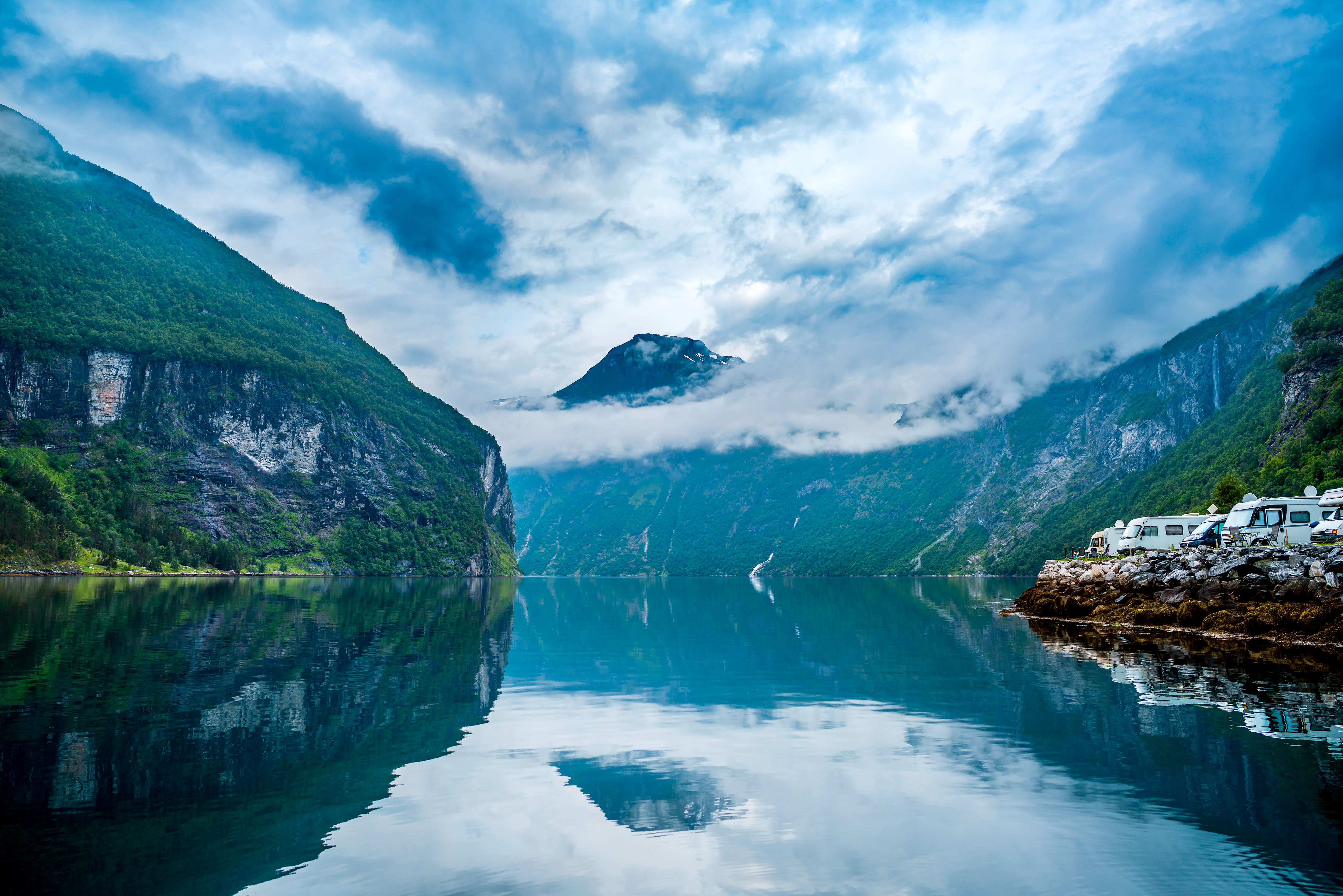
Norway's fjords are among the most dramatic and breathtaking landscapes on Earth, where steep cliffs plunge into deep, glacially-carved valleys filled with crystal-clear water. These natural wonders are the result of glacial activity during the last Ice Age, which sculpted the rugged terrain into the iconic fjords we see today. The interplay of land and sea creates a dynamic environment, where waterfalls cascade down sheer rock faces and lush greenery clings to the cliffs. The fjords are not only a testament to the power of natural forces but also a haven for biodiversity, supporting a wide range of marine and terrestrial life. The serene beauty of Norway's fjords has inspired countless artists and writers, capturing the imagination of all who encounter them. This landscape, with its dramatic contrasts and tranquil waters, offers a sense of peace and wonder, inviting visitors to immerse themselves in the majesty of nature's symphony.
7. The Unique Ecosystem of Socotra: An Island of Alien Flora
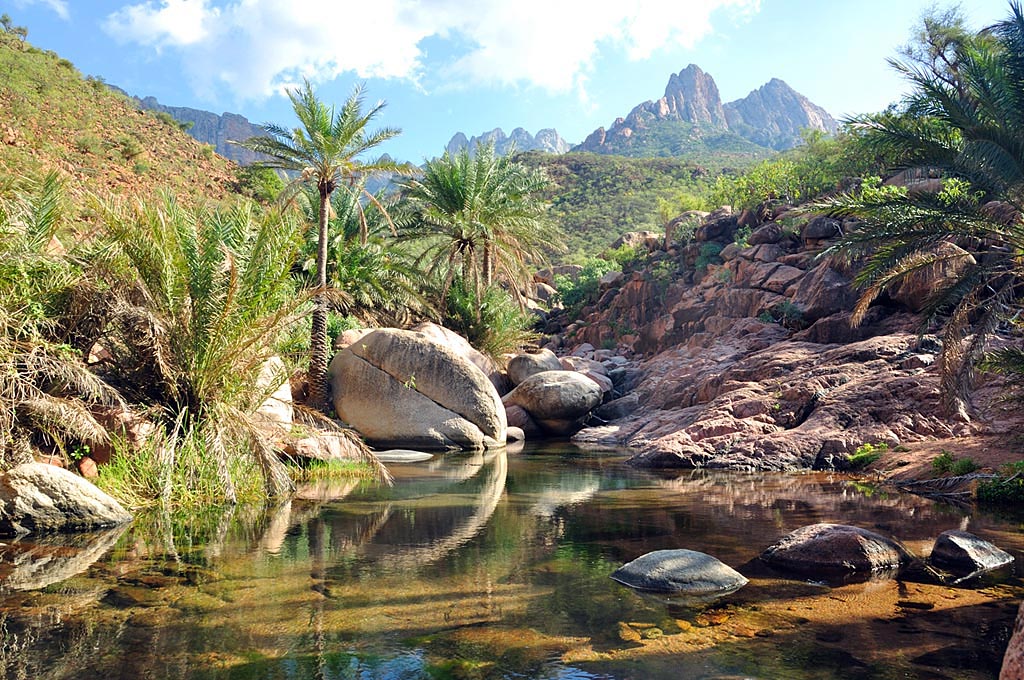
Socotra, an isolated island in the Arabian Sea, is home to one of the most unique ecosystems on the planet, with a high number of endemic species found nowhere else on Earth. The island's most iconic plant, the dragon's blood tree, with its umbrella-shaped canopy and crimson sap, looks like something out of a science fiction movie. This ancient tree, along with other bizarre flora such as the bottle tree and the desert rose, has adapted to the island's harsh, arid conditions, creating a landscape that feels both alien and ancient. Socotra's isolation has allowed its flora and fauna to evolve in unique ways, resulting in a biodiversity hotspot that is both fragile and resilient. The island's otherworldly appearance and ecological significance make it a living laboratory for scientists and a source of wonder for visitors. Exploring Socotra is like stepping into a different world, where the boundaries between reality and imagination blur, and the mysteries of evolution are on full display.
8. The Ethereal Beauty of Pamukkale: Terraces of White and Blue
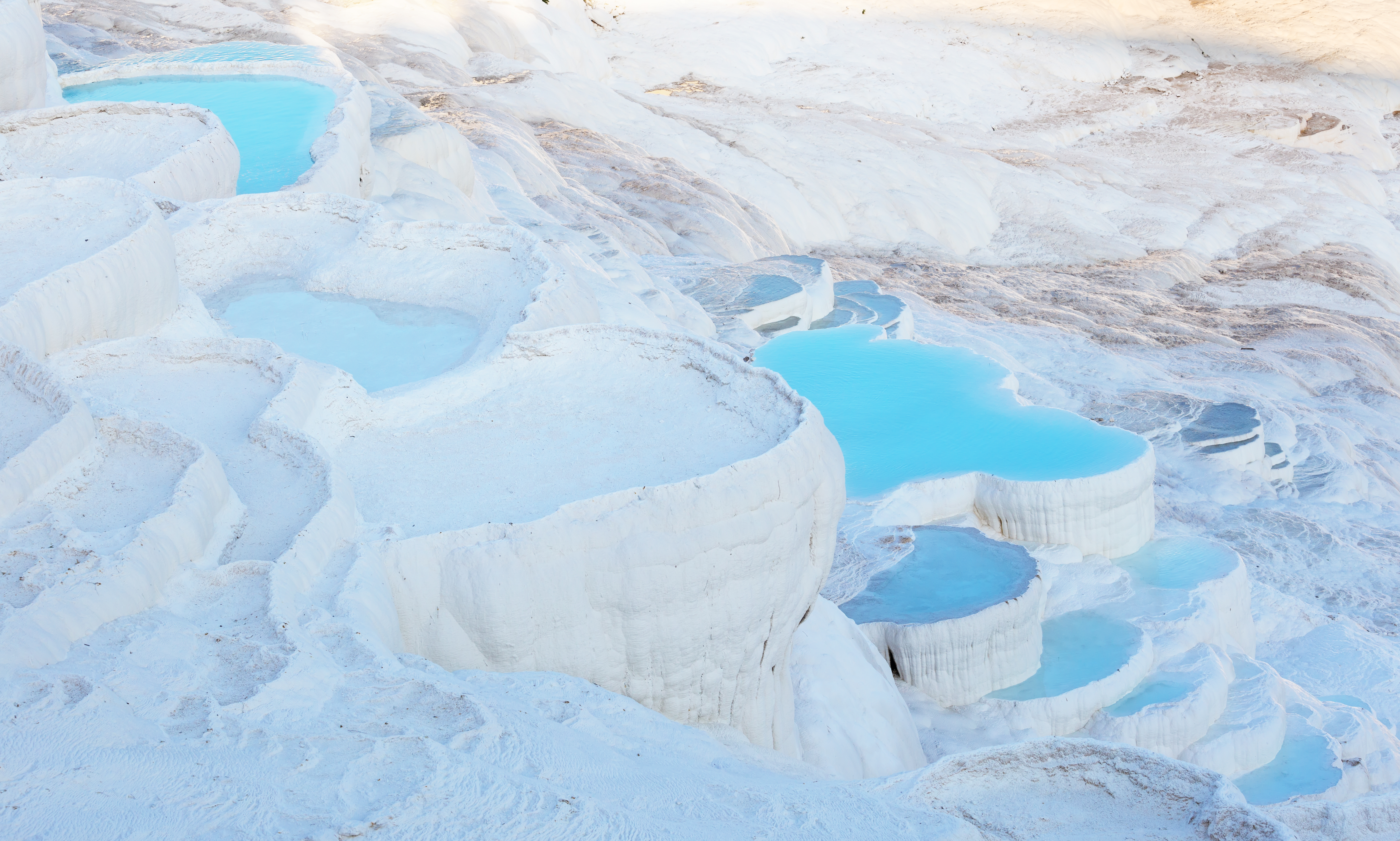
Pamukkale, located in southwestern Turkey, is a natural wonder renowned for its stunning terraces of white travertine, formed by the deposition of calcium carbonate from thermal springs. These terraces, filled with turquoise pools, cascade down the hillside, creating a surreal landscape that resembles a frozen waterfall. The thermal waters of Pamukkale have been revered for their healing properties since ancient times, attracting visitors from around the world. The geological processes that have shaped Pamukkale are both complex and fascinating, involving the interplay of tectonic activity, mineral-rich waters, and climatic conditions. This ethereal landscape is not only a visual spectacle but also a testament to the dynamic forces that continue to shape our planet. Pamukkale's beauty and cultural significance make it a UNESCO World Heritage site, preserving its unique features for future generations to marvel at. Walking among the terraces, one cannot help but feel a sense of awe and wonder at the artistry of nature.
9. The Stark Beauty of Namibia's Sossusvlei: Dunes of Red and Gold
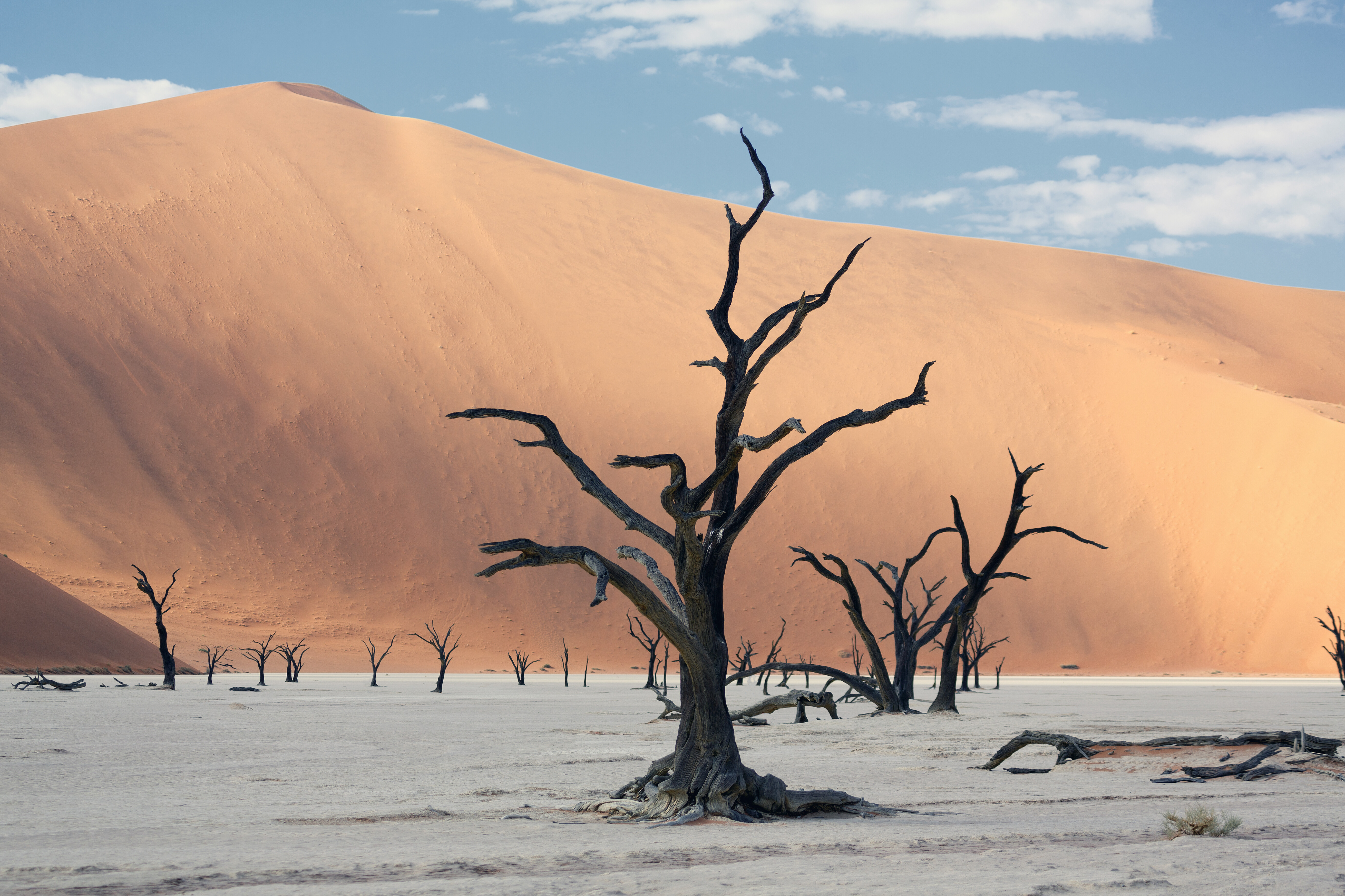
Sossusvlei, located in the Namib Desert of Namibia, is home to some of the tallest sand dunes in the world, their vibrant red and gold hues creating a stark and mesmerizing landscape. These dunes, shaped by the relentless winds of the desert, are a testament to the power and beauty of nature's forces. The Namib Desert is one of the oldest and driest deserts on Earth, and its unique environment has given rise to a variety of specialized plant and animal species. The contrasting colors of the dunes, particularly at sunrise and sunset, create a visual spectacle that is both haunting and beautiful. Sossusvlei's otherworldly appearance has made it a popular destination for photographers and adventurers seeking to experience the raw beauty of the desert. This landscape, with its vastness and solitude, invites introspection and reflection, reminding us of the resilience and adaptability of life in even the harshest conditions.
10. The Bizarre Formations of Bryce Canyon: Hoodoos and Natural Amphitheaters
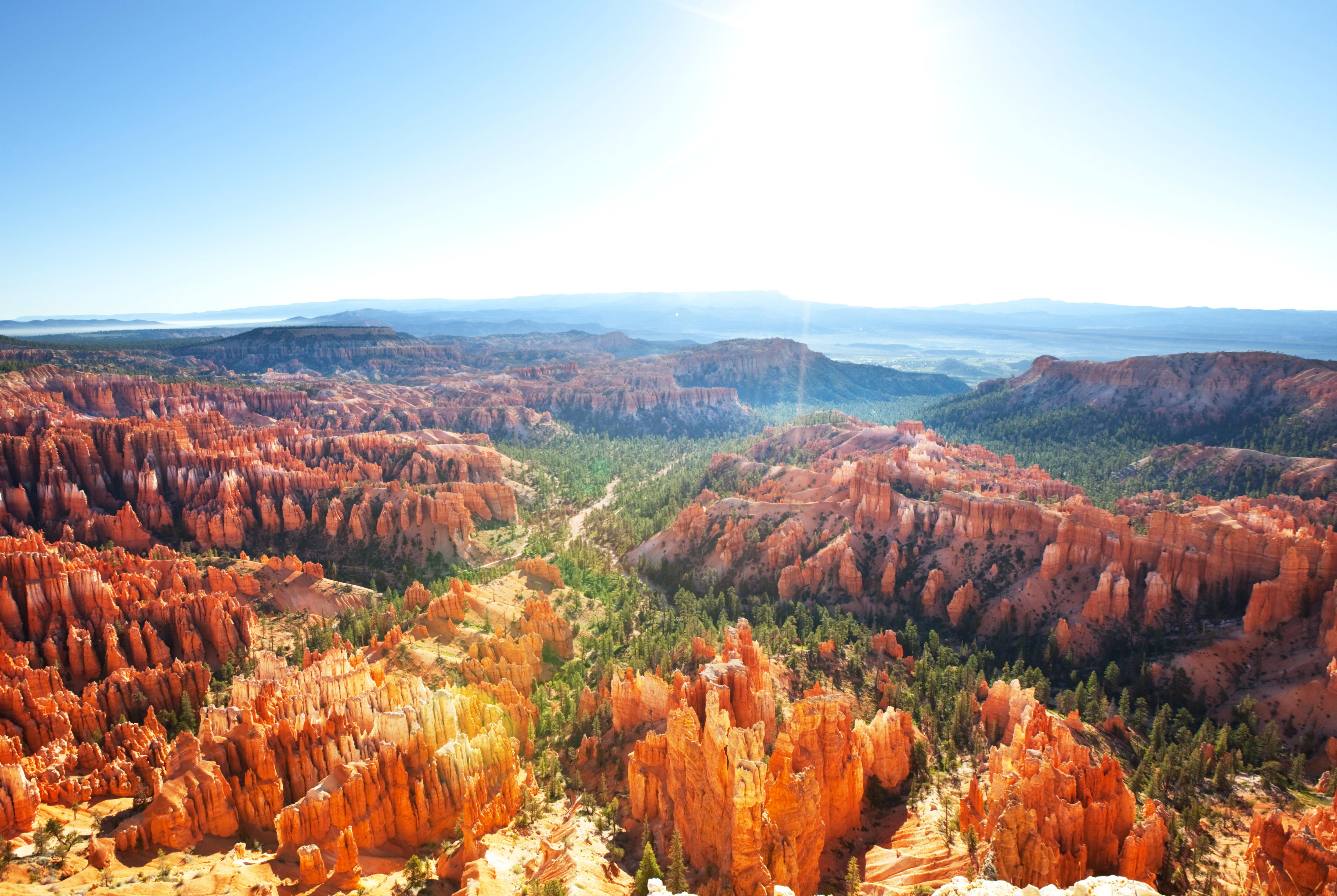
Bryce Canyon National Park in Utah, USA, is renowned for its unique rock formations known as hoodoos, which rise like sentinels from the canyon floor. These tall, thin spires of rock, formed by the forces of erosion, create a landscape that feels both whimsical and otherworldly. The park's natural amphitheaters, with their vibrant colors and intricate patterns, offer a stunning backdrop for exploration and adventure. The geological processes that have shaped Bryce Canyon are a testament to the power of wind, water, and time, creating a dynamic and ever-changing landscape. The park's unique features and rich biodiversity make it a haven for outdoor enthusiasts and nature lovers alike. Walking among the hoodoos, one cannot help but feel a sense of wonder and awe at the artistry of nature. This landscape, with its surreal beauty and geological significance, invites us to explore the mysteries of the natural world and to appreciate the forces that have shaped our planet.
11. The Frozen Majesty of Patagonia: Glaciers and Ice Fields
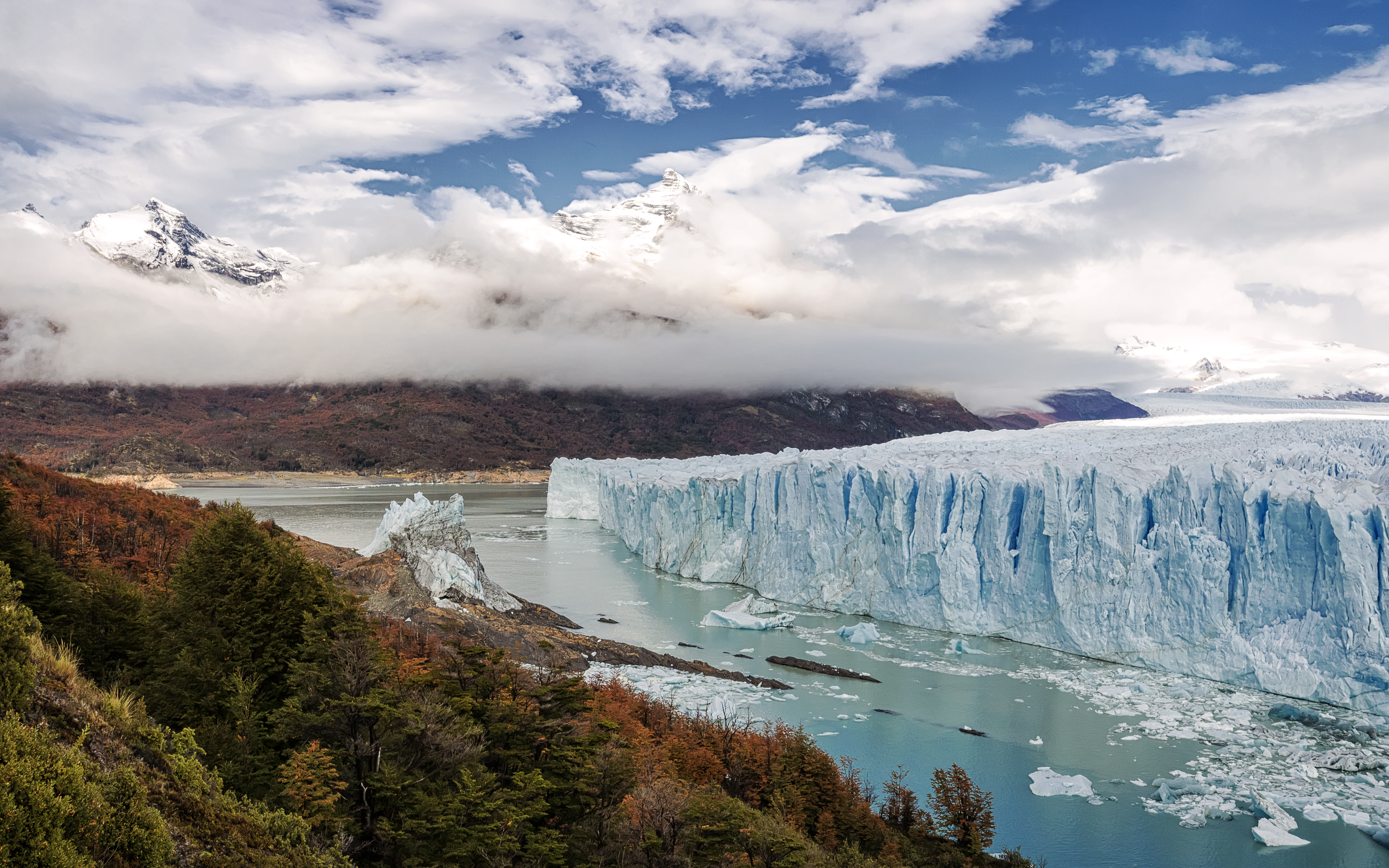
Patagonia, a vast region spanning southern Argentina and Chile, is a land of extremes, where towering mountains, expansive ice fields, and pristine lakes create a landscape of unparalleled beauty. The region's glaciers, some of the largest and most dynamic in the world, are a testament to the power of ice and the forces of nature. The Patagonian Ice Field, the largest contiguous ice field outside of Antarctica and Greenland, feeds numerous glaciers, each with its own unique characteristics and behaviors. The stark beauty of Patagonia's icy landscapes, combined with its rich biodiversity and cultural heritage, make it a destination of wonder and exploration. The region's unique geological features and diverse ecosystems offer a glimpse into the Earth's past and a window into its future. Exploring Patagonia is like stepping into a world of frozen majesty, where the beauty and power of nature are on full display, inviting us to reflect on the fragility and resilience of our planet.
12. The Marble Caves of Patagonia: Sculpted by Nature
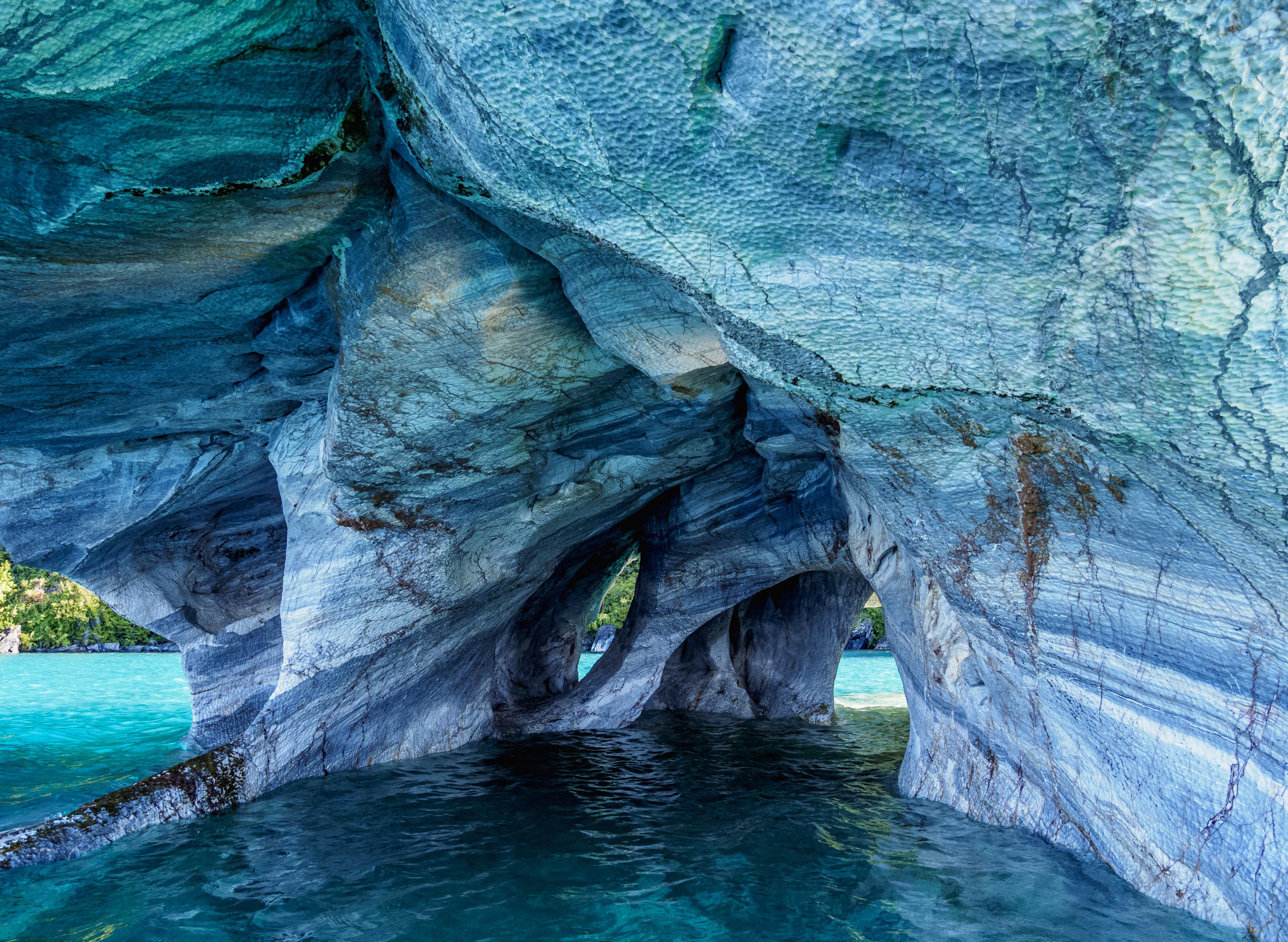
Located on the General Carrera Lake in Chilean Patagonia, the Marble Caves (Cuevas de Mármol) are a breathtaking example of nature's artistry. These caves, carved by thousands of years of wave action, boast smooth, swirling walls of vibrant blue and white marble. The reflection of the turquoise waters against the marble creates an almost surreal glow, transforming the caves into a magical, otherworldly environment. Accessible only by boat, the journey to the Marble Caves is as captivating as the destination itself. Visitors are treated to views of the pristine lake surrounded by snow-capped Andes mountains. The caves change appearance throughout the day, with sunlight casting shifting hues of blue, green, and grey, making each visit a unique experience. This geological wonder highlights the slow yet powerful forces of erosion and serves as a reminder of the delicate beauty of our natural world. The Marble Caves invite travelers to immerse themselves in a serene, dreamlike landscape that feels far removed from the everyday.
13. Lençóis Maranhenses National Park: Sand and Water in Perfect Harmony
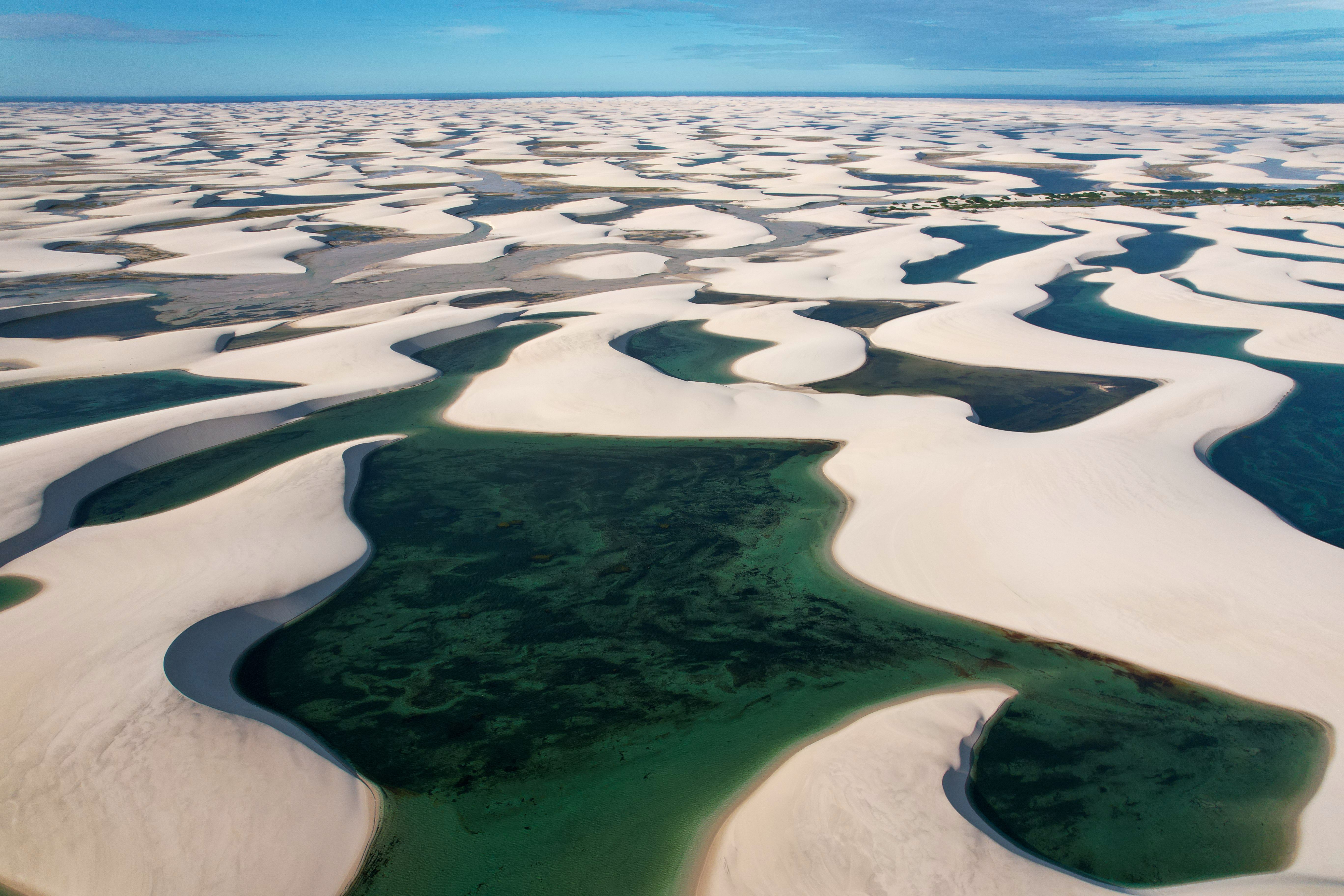
Lençóis Maranhenses National Park in northeastern Brazil defies conventional desert imagery. This unique landscape features vast, rolling sand dunes interspersed with brilliant blue and green lagoons formed by seasonal rainwater. Spanning over 1,500 square kilometers, this seemingly endless expanse of white sand and sparkling water creates an ethereal, otherworldly sight. The lagoons reach their peak beauty between May and September, when the rainy season has filled them to the brim. Visitors can swim in the warm, crystal-clear waters of lagoons like Lagoa Azul and Lagoa Bonita, surrounded by the serene, undulating dunes. The contrast between the arid sand and lush lagoons is nothing short of mesmerizing. Lençóis Maranhenses is a testament to the interplay of nature's elements, creating a landscape that feels like a mirage. It's an ideal destination for those seeking a place where earth, water, and sky converge in perfect harmony.
14. The Giants Causeway: Nature’s Geometric Masterpiece
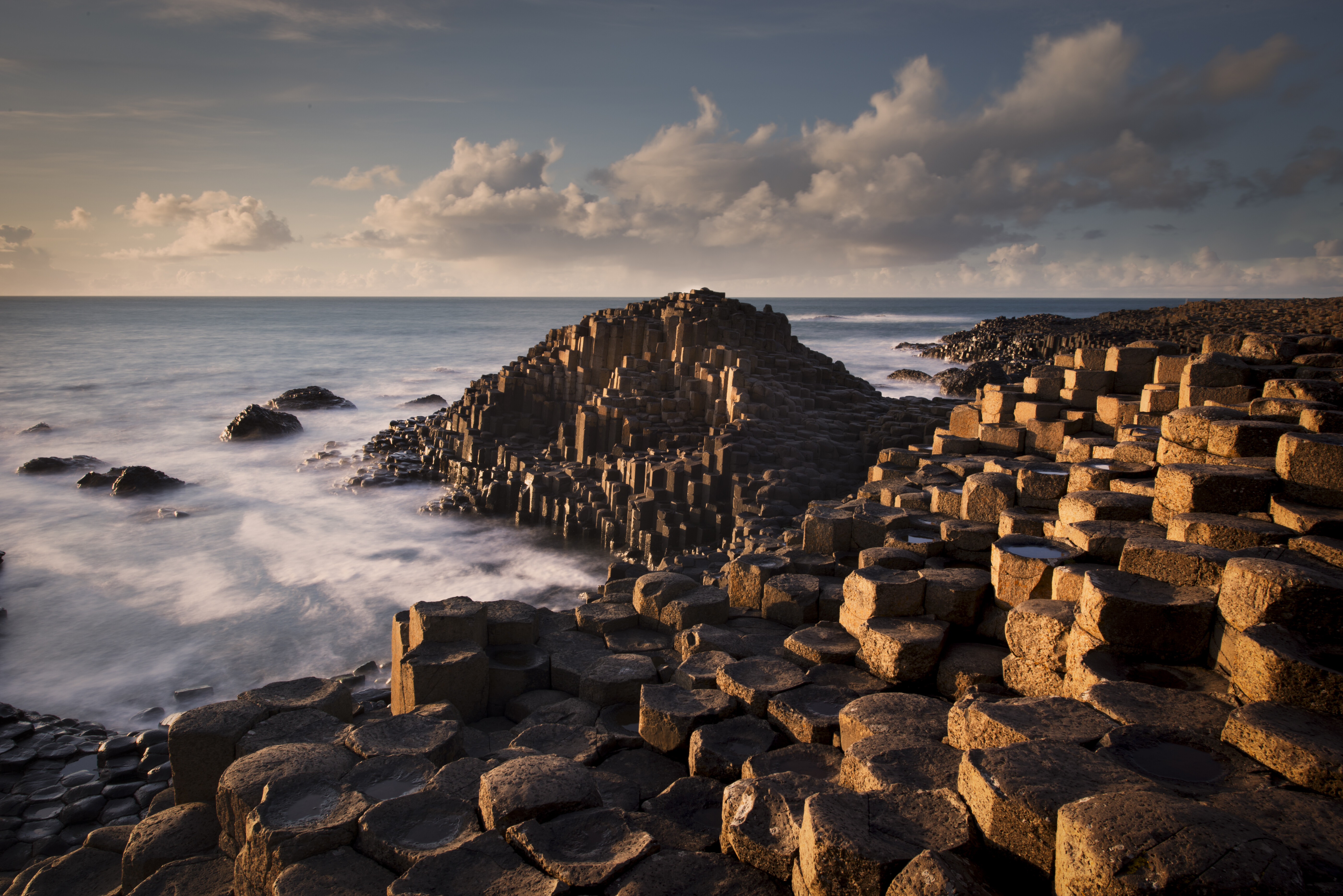
Located on the coast of Northern Ireland, the Giant’s Causeway is a stunning natural formation that looks as if it was crafted by an artist with a penchant for symmetry. Comprising approximately 40,000 interlocking basalt columns, this UNESCO World Heritage Site was formed by volcanic activity some 50-60 million years ago. The cooling and cracking of lava created the hexagonal shapes that make this site so mesmerizing. The columns, some of which reach heights of 12 meters, descend dramatically into the Atlantic Ocean, creating a surreal stepping-stone path. Legends add to the allure of this site, with Irish folklore claiming it was built by the mythical giant Finn McCool as a bridge to Scotland. Visitors can explore the rugged coastline, marvel at the geometric precision of the basalt formations, and take in the dramatic ocean views. The Giant’s Causeway is a reminder of the powerful forces of nature that shape our world, leaving behind landscapes that defy imagination.
15. The Door to Hell: Turkmenistan’s Flaming Crater
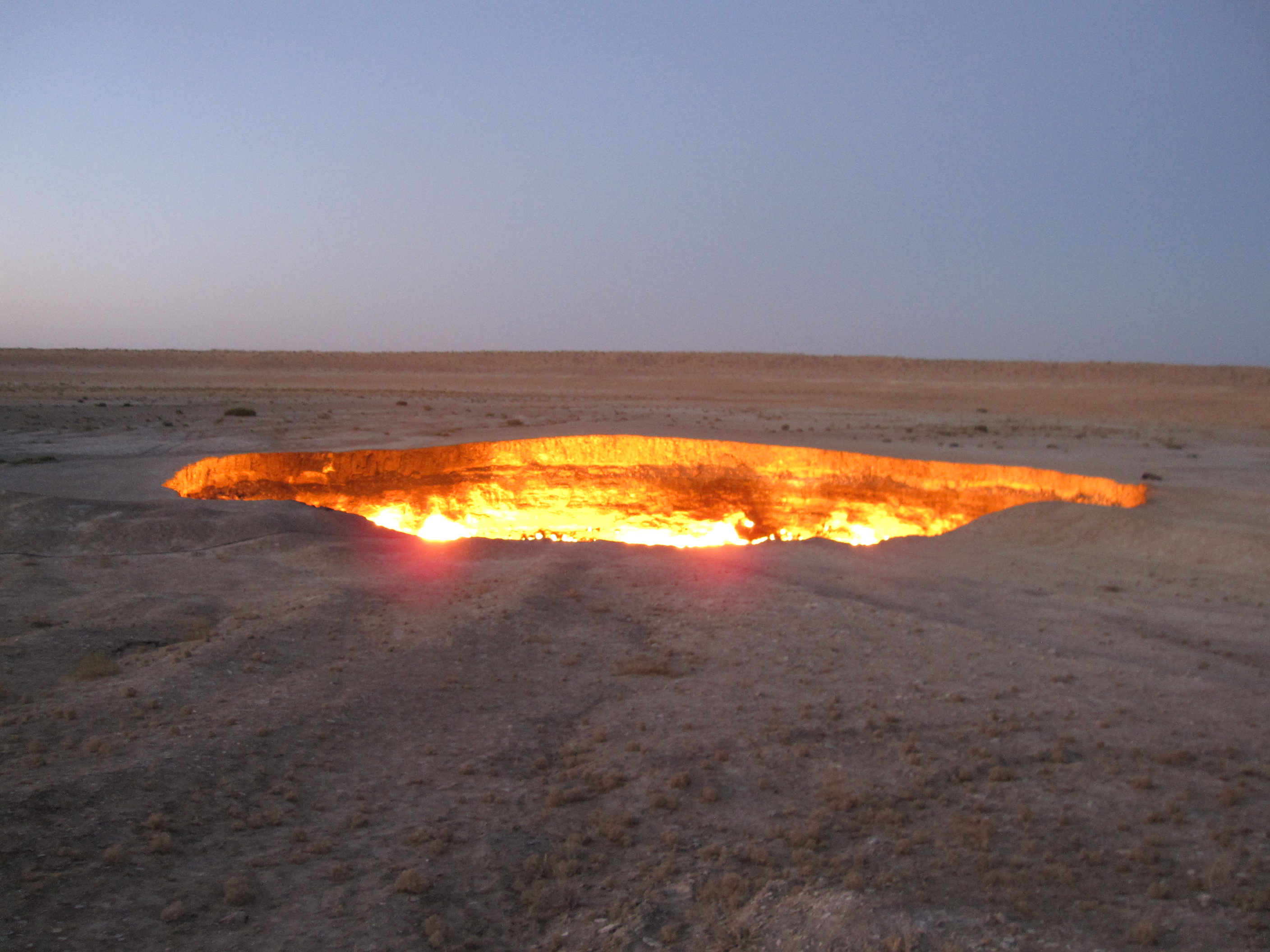
Deep in the Karakum Desert of Turkmenistan lies the Darvaza Gas Crater, ominously nicknamed "The Door to Hell." This fiery pit, which spans approximately 70 meters in diameter, has been burning continuously since 1971 after a natural gas field collapsed and was ignited to prevent the spread of methane. The crater emits a constant orange glow, casting flickering shadows on the surrounding desert and creating a spectacle that is both haunting and mesmerizing. At night, the flames appear even more intense, illuminating the barren landscape with an otherworldly light. The Darvaza Gas Crater is a striking example of humanity's interaction with natural forces, resulting in a phenomenon that feels like a portal to another dimension. Visitors brave enough to venture into the remote desert are rewarded with a surreal and unforgettable experience, witnessing one of Earth’s most unusual and dramatic features.
16. The Pink Waters of Lake Hillier: A Natural Pastel Phenomenon
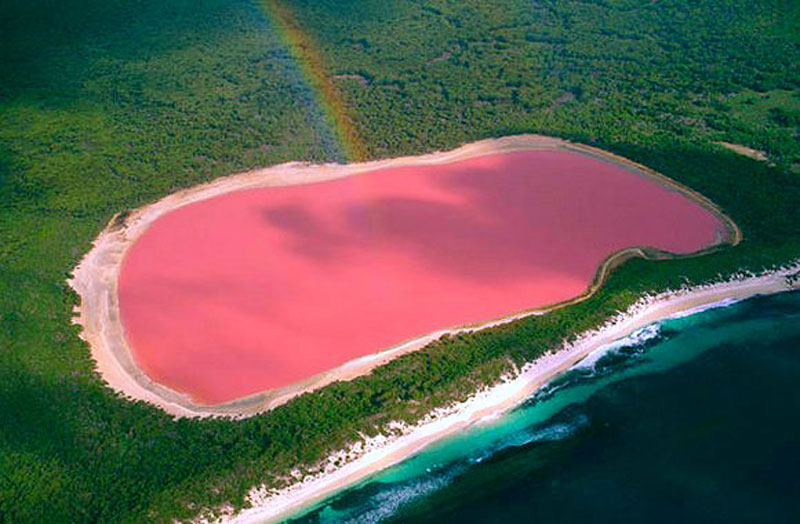
Nestled on Middle Island off the coast of Western Australia, Lake Hillier is famous for its striking bubblegum-pink color. This vibrant hue is caused by the presence of Dunaliella salina algae and halophilic bacteria, which thrive in the lake's high-salinity environment and produce pigments that turn the water an eye-catching pink. The contrast between the lake’s pastel waters, the lush greenery of the surrounding island, and the deep blue of the Southern Ocean creates a visual spectacle that feels almost otherworldly. Unlike many colorful lakes, Lake Hillier's pink color is constant and does not change with seasons or water levels. Accessible primarily by air, visitors can marvel at this natural wonder from above, appreciating its vivid beauty and the scientific marvel of its unique ecosystem. Lake Hillier is a perfect example of the unexpected splendor hidden in Earth’s remote corners, a place where nature’s palette seems to defy convention.
17. The Otherworldly Palette of Bentonite Hills: Utah's Painted Fantasy
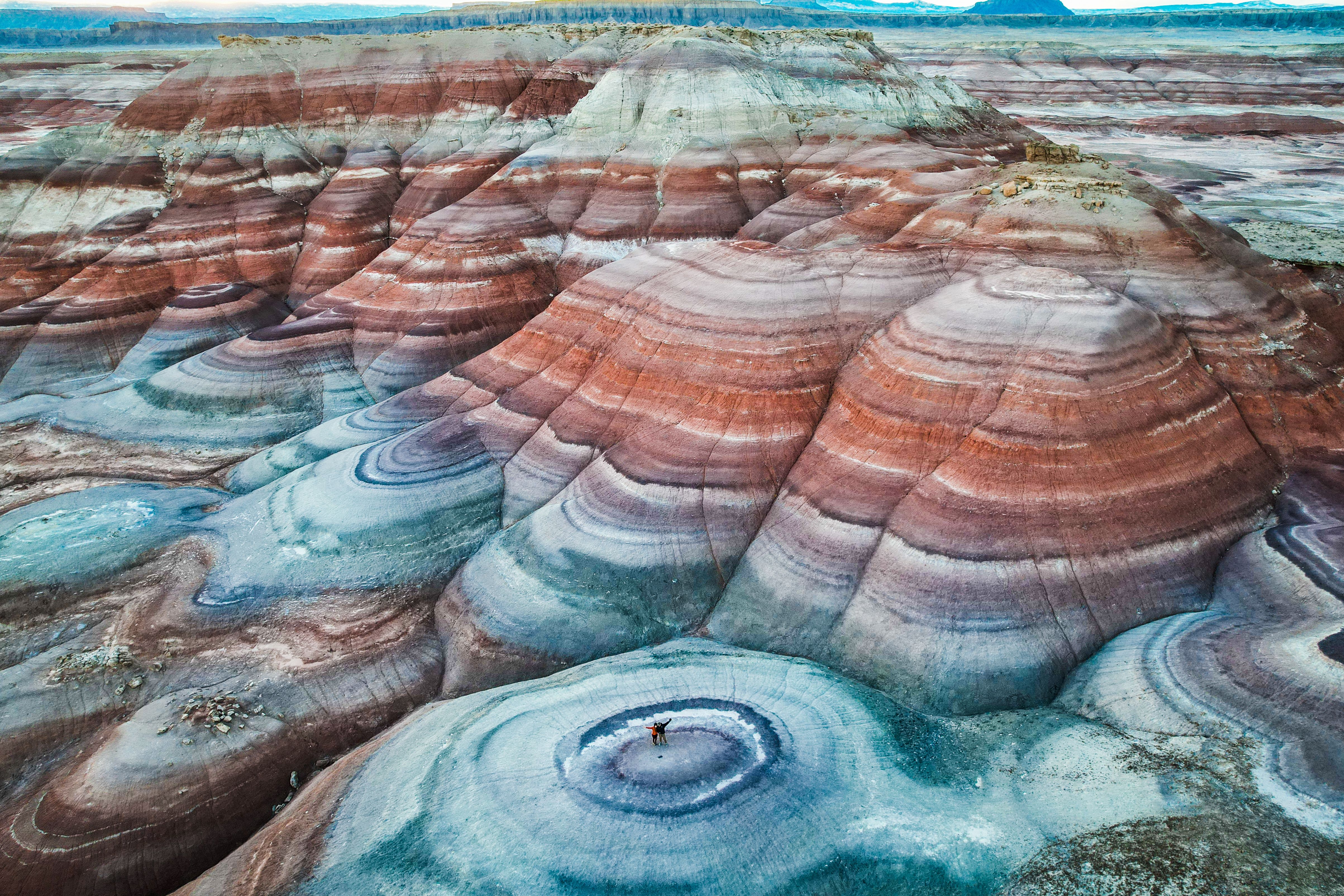
Nestled within the boundaries of Utah's Capitol Reef National Park, the Bentonite Hills present a surreal landscape that seems to have leapt from the pages of a science fiction novel. These undulating mounds, rich in bentonite clay, are renowned for their striking palette of reds, purples, blues, and greens, which shift and shimmer in the sunlight. This kaleidoscope of colors is the result of volcanic ash deposits that have been transformed over millions of years into clay, combined with the unique mineral composition of the region. Walking through the Bentonite Hills feels like stepping onto an alien planet, where the smooth, rounded shapes and vibrant hues defy the conventional expectations of Earthly terrain. The area is especially captivating during the golden hours of sunrise and sunset, when the light enhances the colors and adds depth to the hills' already surreal appearance.
The Endless Inspiration of Earth's Sci-Fi Landscapes
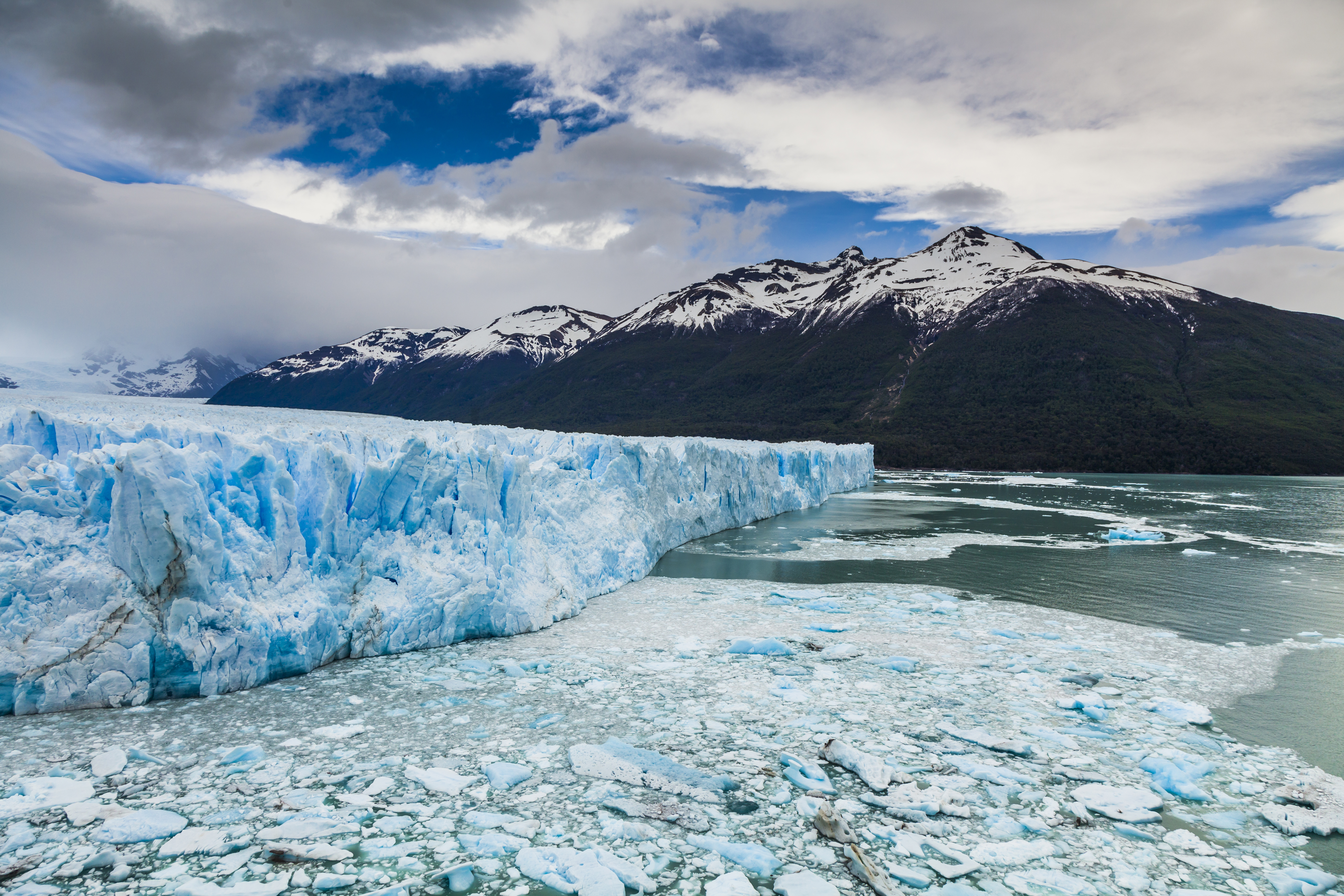
As we conclude our journey through these 16 mind-bending landscapes, it becomes clear that Earth is a planet of infinite possibility and wonder. Each of these landscapes, with its unique features and stories, offers a glimpse into the creative power of nature and the endless inspiration it provides. From the reflective expanses of Salar de Uyuni to the ethereal glow of Waitomo Caves, these places challenge our perceptions of reality and invite us to dream beyond the stars. They remind us of the interconnectedness of all life and the delicate balance that sustains our planet. These landscapes are not only natural wonders but also sources of inspiration for artists, writers, and scientists, sparking the imagination and pushing the boundaries of what we believe to be possible. As we continue to explore and protect these extraordinary places, we are reminded of the beauty and complexity of the world we call home, and the endless possibilities that lie within it.

